Pan seared scallops are one of life's greatest joys. Delicate, sweet, and incredibly delicious, they make a great choice for a special occasion meal.
If you've never had a scallop - think sweet, tender seafood with a subtle but complex flavor that pairs well with a wide range of ingredients. They are a must-try for any seafood lover!
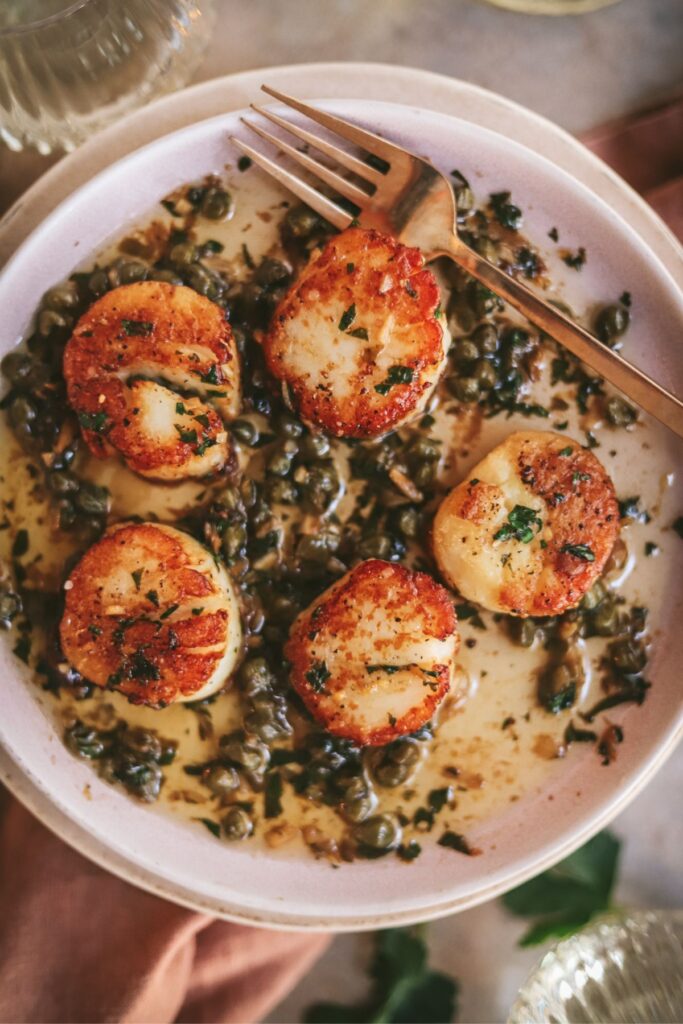
Plus, scallops are actually super easy and quick to cook. The main trap that people fall into is overcooking them.
These guys need max, two minutes per side. Don't question it. Don't leave them longer. Just get them out of the pan and carry on.
Overcooked scallops taste like a rubber bouncy ball inside your mouth. You're welcome for that visual. It's...not appealing.
Seared scallops are light, delicate, and delicious - perfect for any special occasion. Or just a Friday night when you've opened a good bottle of Chardonnay.
Jump to:
- Why You're Going to Love this Recipe
- Frequently Asked Questions
- What Are Scallops?
- What's the Difference between Wet and Dry Scallops?
- What's the Difference between Bay and Sea Scallops?
- Why are they So Expensive?
- Ingredients
- How to Sear Scallops
- Tips and Tricks
- How to Serve Them
- Wine Pairings
- Other Amazing Seafood Dishes to Try
- 📖 Recipe
Why You're Going to Love this Recipe
- Scallops have a naturally sweet and delicate flavor, which makes them a favorite among seafood lovers.
- Once you get the hang of them, they're easy! Just don't overcook!
- They're so quick - honestly this whole dish comes together in less than 15 minutes.
- When seared correctly, scallops have a beautiful golden brown color and a crispy exterior, which adds a great texture, and makes them so beautiful.
- Serving the scallops with butter and lemon enhances their flavor and adds complexity to this dish.
Frequently Asked Questions
Scallops themselves are relatively low in calories and in fat. They're also a good source of protein and essential minerals including magnesium and phosphorus. But - when they're cooked in butter, they are definitely higher in calories and unhealthy fats.
It depends. Many restaurants will leave the scallops creamy and slightly raw in the center to ensure that the scallop has a delicate, tender texture. When they're done, the scallops should be golden brown on the top and bottom, and opaque in the center. They should be incredibly tender and easy to cut as well.
Scallops have a delicate, sweet flavor that is often compared to shrimp or lobster. They are a favorite among seafood lovers for their tender, succulent meat and their versatility in the kitchen.
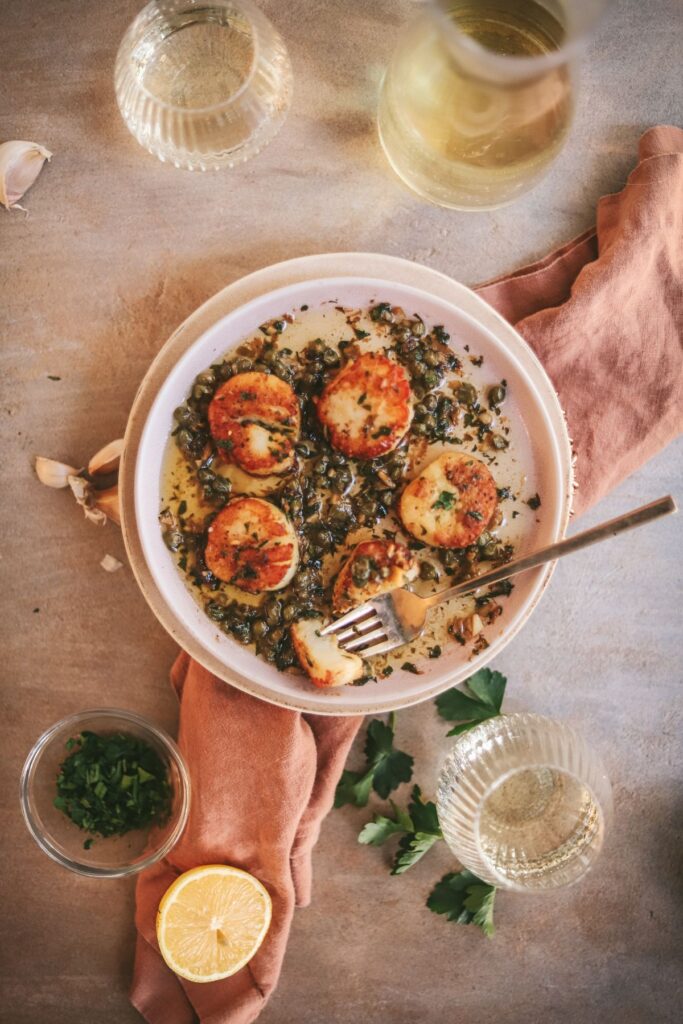
What Are Scallops?
Scallops are a type of shellfish that are prized for their delicate, sweet flavor and tender, succulent meat. These tasty morsels are often served as a seafood delicacy in high-end restaurants, but they are also a versatile ingredient that can be used in a variety of dishes, from appetizers to main courses.
One of the things that makes scallops so delicious is their ability to absorb flavors from other ingredients. This makes them a great canvas for a variety of flavors, from rich and creamy sauces to bright and zesty marinades.
Whether they are seared, grilled, or sautéed, scallops are always a crowd-pleaser, adding a touch of luxury to any meal.
What's the Difference between Wet and Dry Scallops?
Wet scallops are scallops that have been treated with a chemical called sodium tripolyphosphate (STP), which helps to retain moisture and keep them from drying out. As a result, wet scallops are often softer and more tender than dry scallops. However, they can also be less flavorful and less appealing in color, because the STP can cause them to turn a grayish hue.
On the other hand, dry scallops have not been treated with STP and are therefore "drier" in the traditional sense of the word. They tend to be firmer and more flavorful than wet scallops, and they also tend to have a more attractive appearance due to their natural color. However, they can be more prone to drying out if they are overcooked.
Ultimately, the choice between wet and dry scallops will depend on your personal preference and the specific recipe you are using. Both types of scallops can be delicious, but it's important to be aware of the differences and choose the type that will work best for your needs.
I tend to prefer dry scallops, because they sear better, and the look amazing. If you don't overcook them - they're amazing.
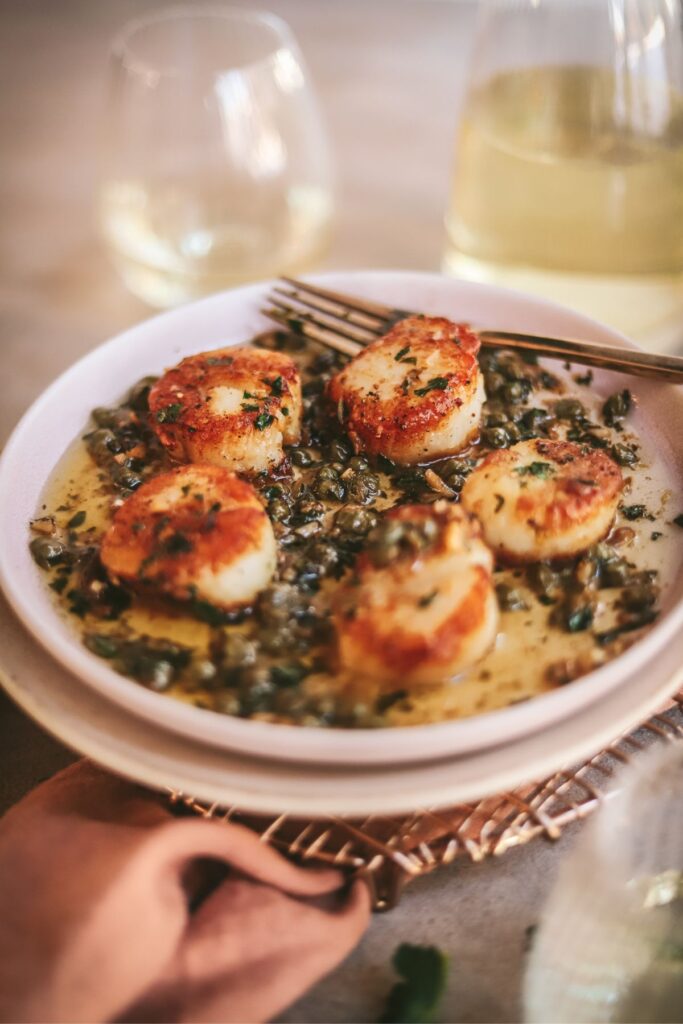
What's the Difference between Bay and Sea Scallops?
Bay scallops are smaller and more delicate than sea scallops, with a sweet and delicate flavor. They are typically found in shallow, sheltered bays along the Atlantic coast, and are usually harvested from November to March. Bay scallops are usually sold shucked (removed from the shell) and are often used in appetizers or as a garnish.
Sea scallops, on the other hand, are larger and more meaty than bay scallops. They are usually found in deeper waters and are usually harvested from January to April. Sea scallops are sold with the muscle still attached, and are often used in main dishes or as a protein component in salads and other dishes.
When you're cooking seared scallops, I find it so much easier to use the larger, sea scallops. They're just way easier to cook with.
Why are they So Expensive?
Scallops are a relatively scarce resource: they're are not as abundant as some other types of seafood. This can drive up the price.
They're time-consuming to harvest: Scallops are usually harvested by divers who have to search for them on the ocean floor. This is a labor-intensive process, which can contribute to the cost.
Scallops are a high-demand item: Scallops are a popular choice among seafood lovers, which means that there is often strong demand for them. When demand is high, prices tend to be higher as well.
Ingredients
- 1 pound large sea scallops
- 2 tablespoon olive oil
- 2 tablespoons butter
- 2 cloves garlic, minced
- 2 tablespoons capers
- 1 lemon, zested and juiced
- Salt and pepper to taste
- Fresh parsley, chopped (optional)
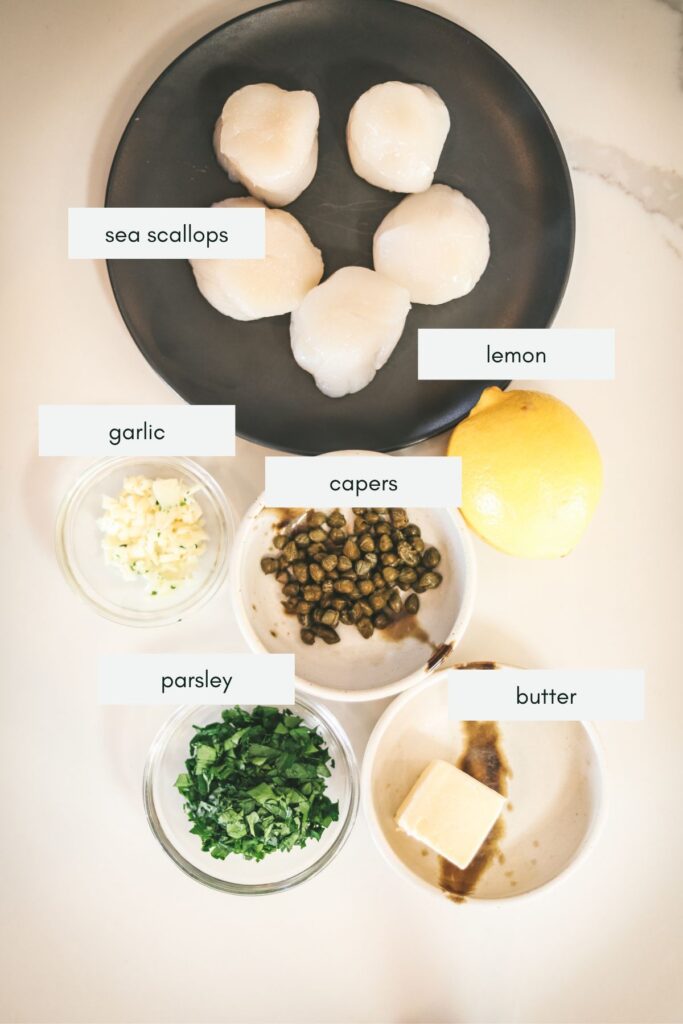
How to Sear Scallops
Pat the scallops dry with paper towels and season with salt and pepper.
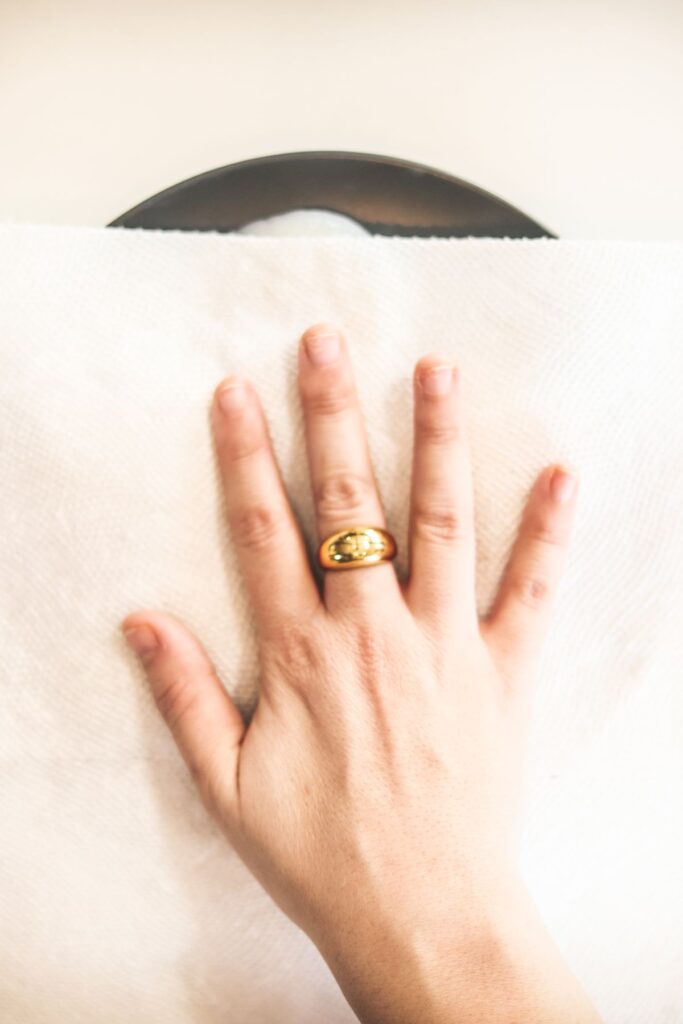
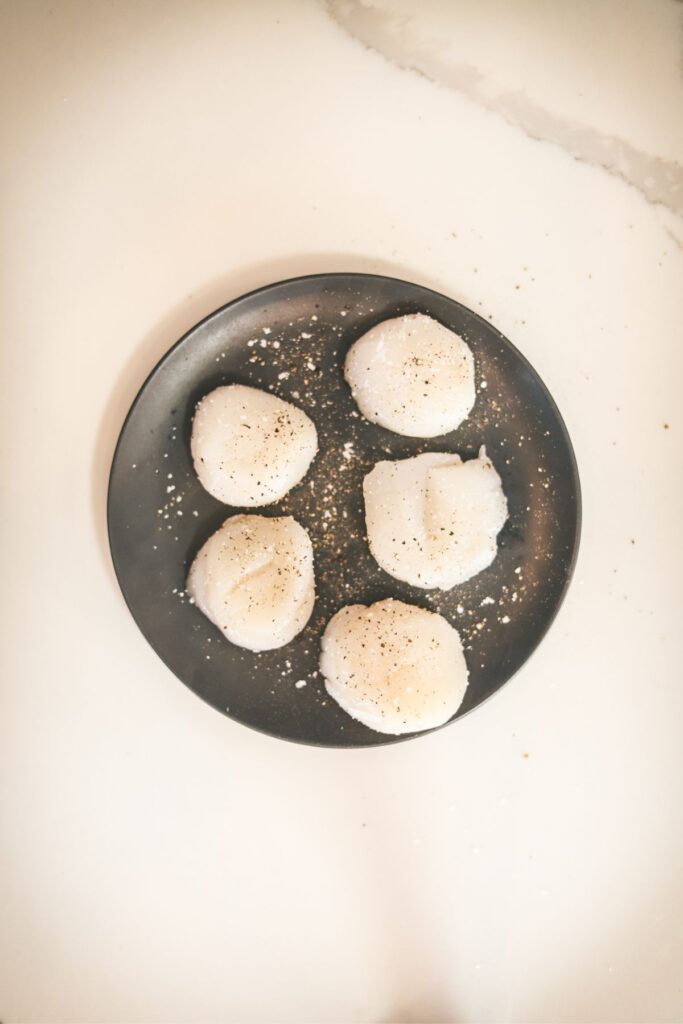
Add your oil to the pan, and heat until it's screaming hot. The oil should be shimmering.
Add your scallops in a single layer, about an inch apart. Cook for 2 minutes max, then flip and cook for another two minutes. Remove them from the pan, and keep them warm in an oven on low heat.
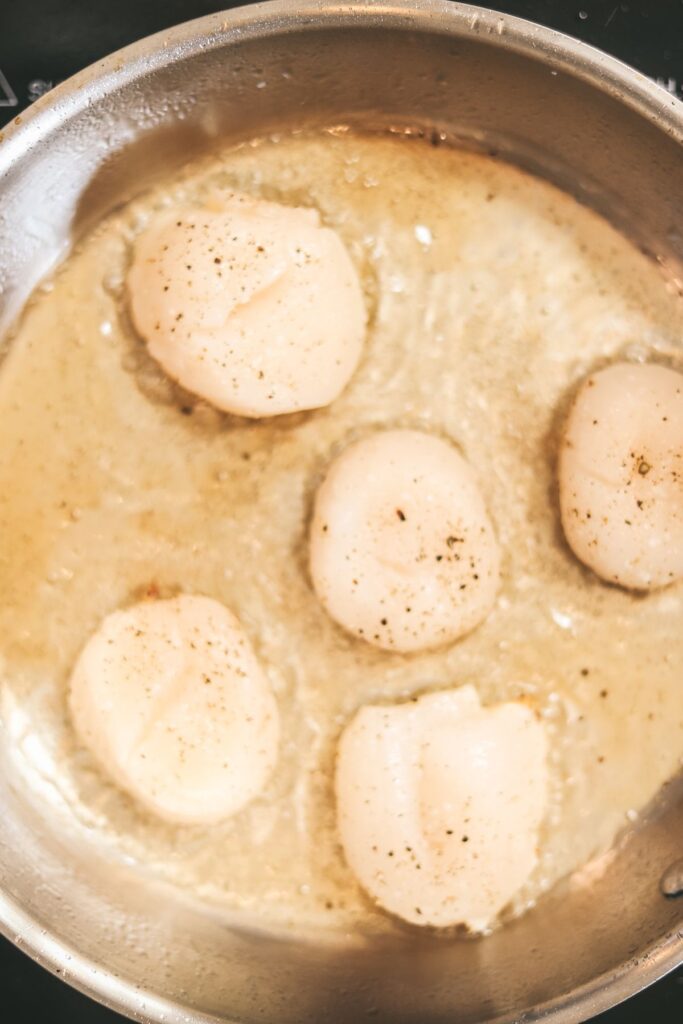
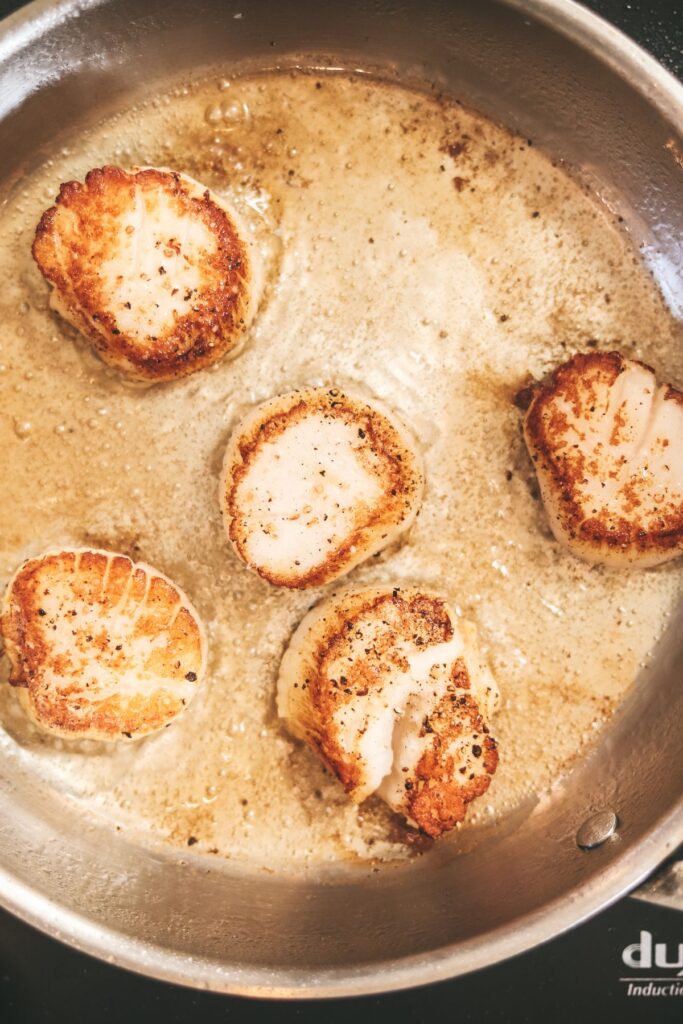
Melt the butter in a large pan over medium-high heat. Add the garlic and cook until fragrant, about 1 minute.
Add the capers, lemon zest and juice to the pan and stir to combine.
Return the scallops to the pan and toss with the lemon, butter, and caper mixture.
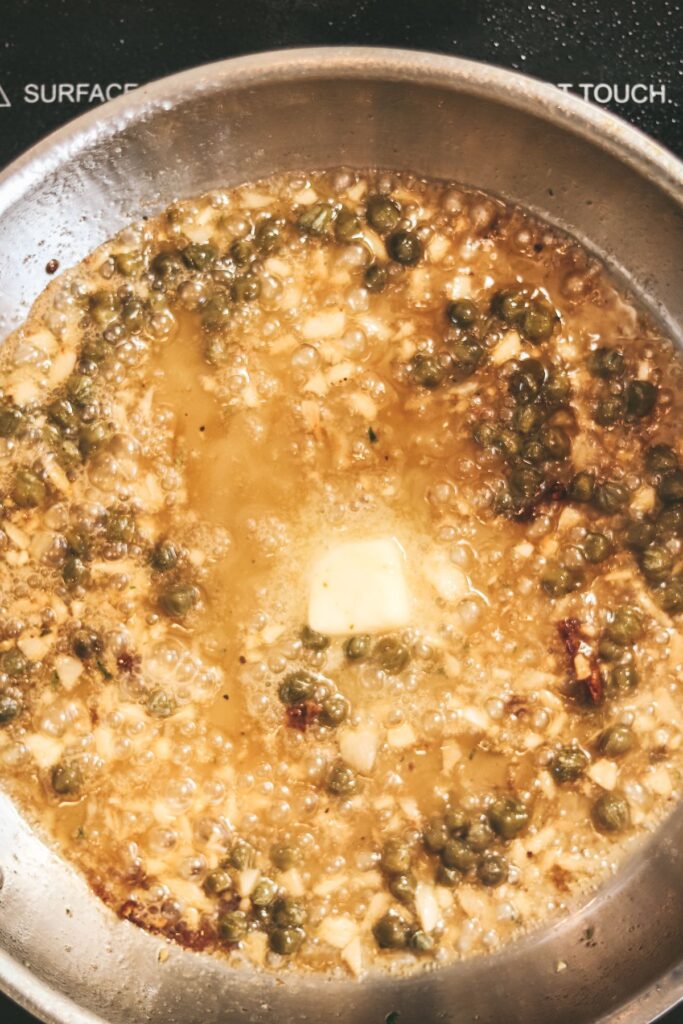
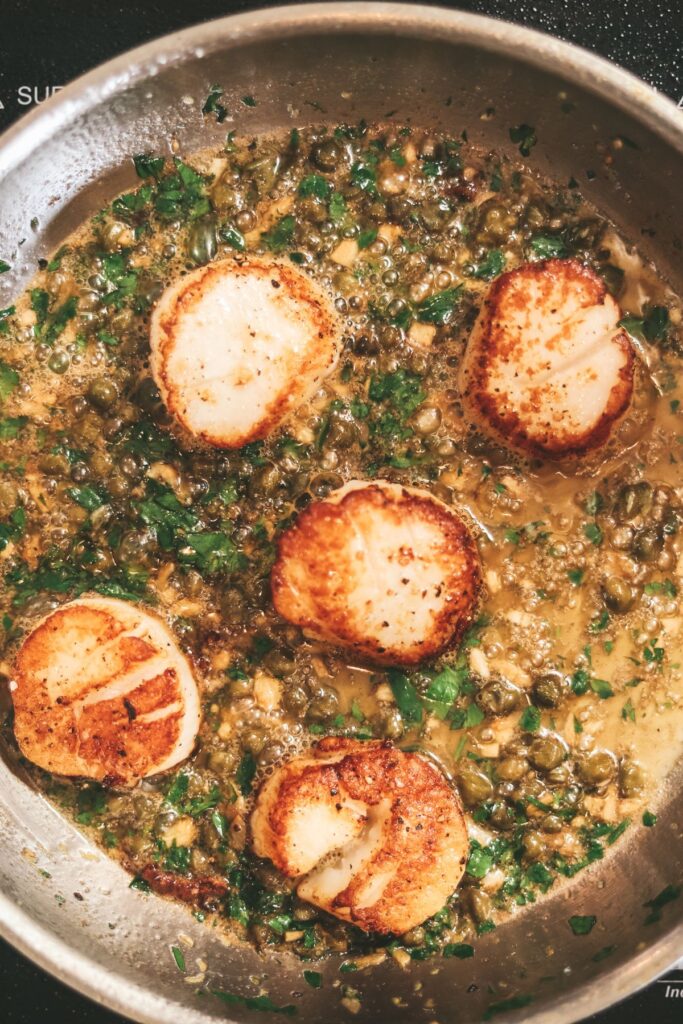
Add the parsley and lemon zest at the last minute, and serve immediately.
Tips and Tricks
Start with high-quality scallops: Scallops can be expensive, but it's worth it to splurge on high-quality ones. Look for scallops that are firm to the touch and have a sweet, fresh smell. Avoid scallops that are slimy or have an off smell.
Pat the scallops dry: Before cooking the scallops, pat them dry with paper towels to remove any excess moisture. This will help them to sear evenly and develop a crispy crust.
Season the scallops: Be sure to season the scallops with salt and pepper before cooking them. This will help to bring out their natural flavor and add some depth to the dish.
Use a hot pan: To get the best sear on the scallops, be sure to use a hot pan. Preheat the pan over medium-high heat for a few minutes before adding the scallops.
Don't overcrowd the pan: Be sure to leave enough space between the scallops so that they have room to cook evenly. Overcrowding the pan will cause the scallops to steam instead of sear.
Don't move the scallops around too much: Once you've placed the scallops in the pan, resist the urge to move them around too much. Let them cook undisturbed for a minute or two to allow a crust to form, then flip them carefully and repeat on the other side.
Get them off the heat as soon as they're done (or maybe even a little before). They'll keep cooking once they're out of the pan, and you want to make sure they don't overcook.
Do not, under any circumstances, walk away from that pan. These babies go from underdone to rubber in seconds.
Serve immediately: Scallops are best served immediately after they are cooked, while they are still hot and tender. If you need to hold them for a few minutes before serving, place them in a warm spot (such as the oven set to the "warm" setting) to keep them from getting cold.
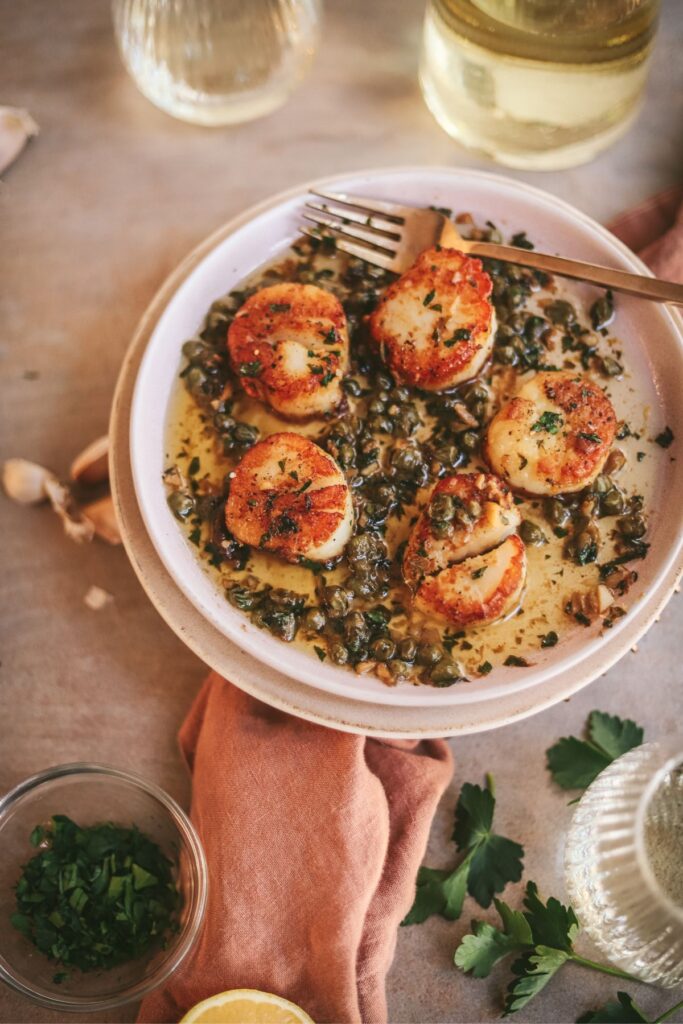
How to Serve Them
Roasted vegetables: Roasted vegetables such as asparagus, broccoli, or Brussels sprouts are a great pairing option. They add a pop of color and a crunchy texture to the dish.
Salad: A light and refreshing salad is always a good choice to balance out the richness of this dish. Try a simple mixed greens salad with a citrusy vinaigrette, or a spinach salad with sliced strawberries and a balsamic dressing.
Grilled bread: Grilled bread is a simple but effective way to add some substance to the dish. Try brushing a baguette and grilling it until it's crispy and golden brown.
Mashed potatoes: If you're in the mood for something more comforting, mashed potatoes are a classic choice to serve with seared scallops. They provide a creamy, starchy counterpoint to the richness of the scallops.
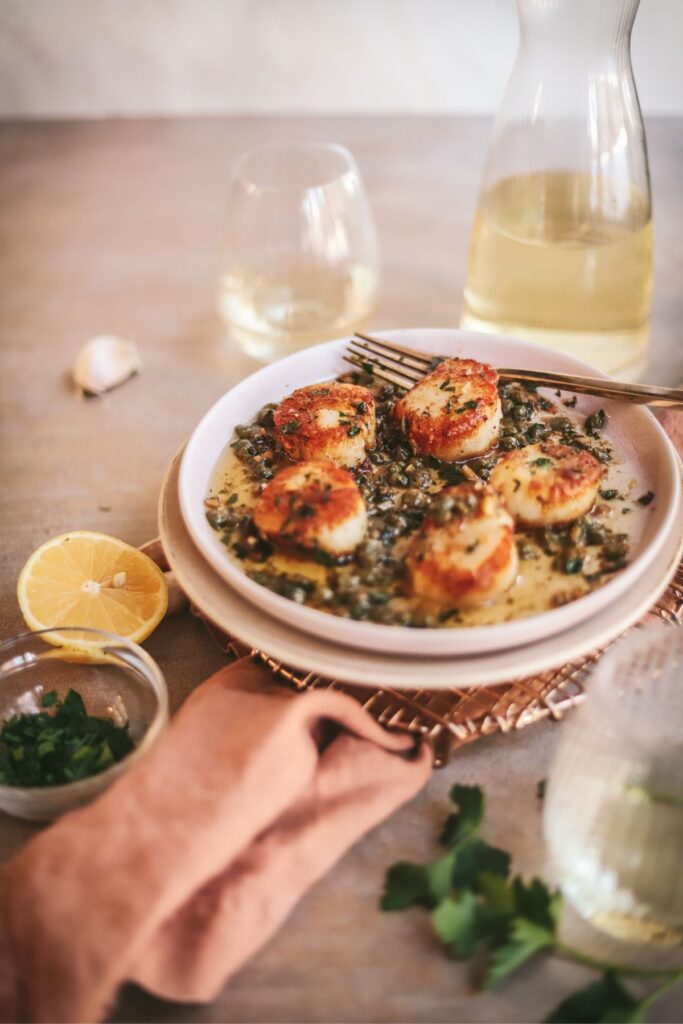
Wine Pairings
Seared scallops can be paired with a variety of white wines. Some options that would work well include:
- Chardonnay: A full-bodied chardonnay with a creamy texture can complement the richness of the scallops and the buttery sauce.
- Sauvignon Blanc: A crisp and citrusy sauvignon blanc can help to balance the richness of the scallops and cut through the butter and lemon in the sauce.
- Vermentino: This bright and refreshing Italian white wine has a pleasant minerality that pairs well with seafood.
- Viognier: A aromatic viognier with flavors of apricot and peach can be a good match for the scallops and the lemon in the sauce.
It's also worth noting that sparkling wines and dry rosé can be good choices for pairing with scallops as well. Ultimately, the best wine pairing will depend on your personal preferences and the specific flavors and ingredients in your dish.
Other Amazing Seafood Dishes to Try
📖 Recipe
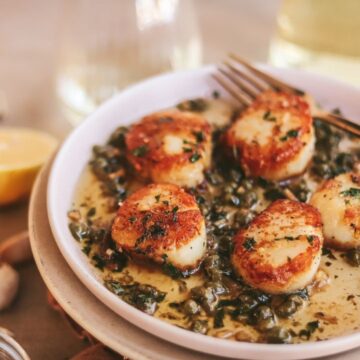
Seared Scallops with Lemon Butter and Capers
Ingredients
- 5-6 sea scallops
- salt and pepper divided, for seasoning
- 2 tablespoon olive oil
- 2 tablespoon butter
- 2 cloves garlic minced
- 1 lemon zested and juiced
- 3 tablespoon capers
- 2 tablespoon fresh parsley chopped
Instructions
- Pat your scallops dry on both sides with a paper towel. Season liberally with salt and pepper.
- Heat the oil in a large pan over medium-high heat. Make sure the oil is very hot before you add the scallops. Add the scallops in a single layer, and then don't touch them. Let them sear for 2 minutes before flipping. They should have a nice crust on them.
- Sear for another two minutes, then remove from the pan and keep warm.
- Turn the heat down to medium-low. Add the butter, garlic, lemon juice and capers to the pan. Let the butter melt, and garlic cook, about one minute.
- Add the scallops back to the pan, and toss them in the butter.
- Add the lemon zest and parsley right at the end. Serve immediately.
Video
Notes
Nutrition
Hi, I'm Cara! I'm a food writer, journalist, and recipe developer. I'm obsessed good food, good wine, good cocktails and entertaining. I've picked up a few tips over the years, and love sharing them with others.


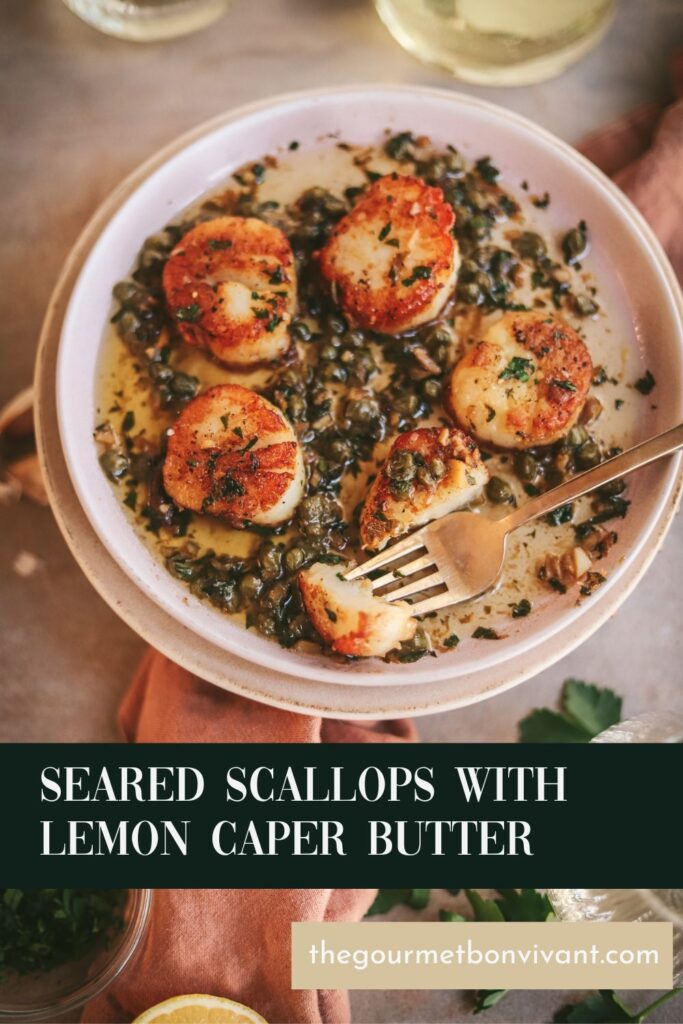
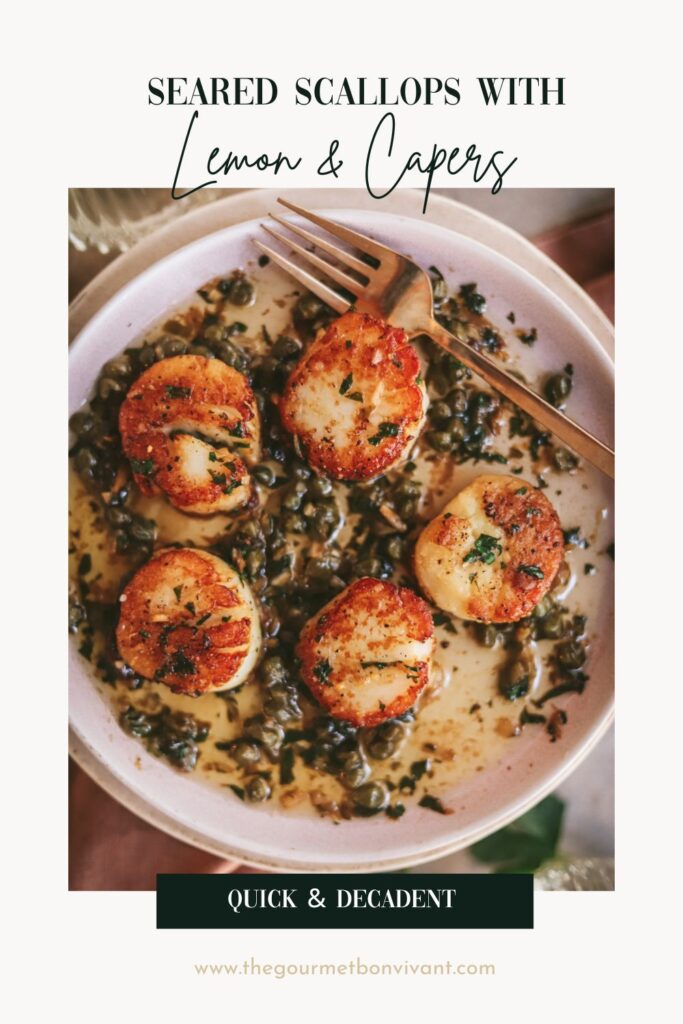
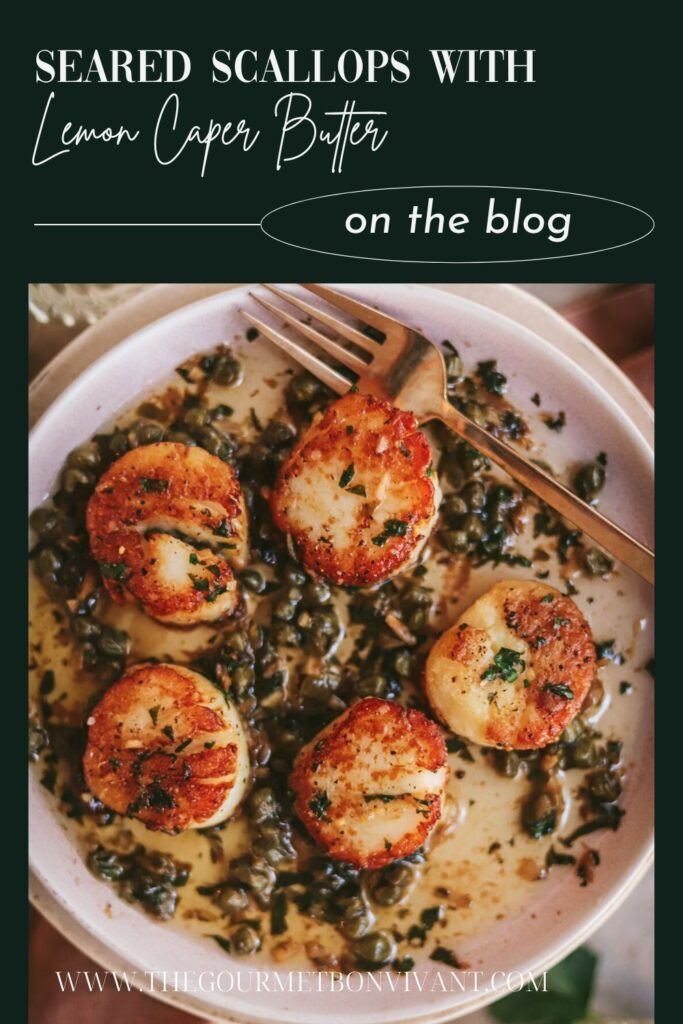
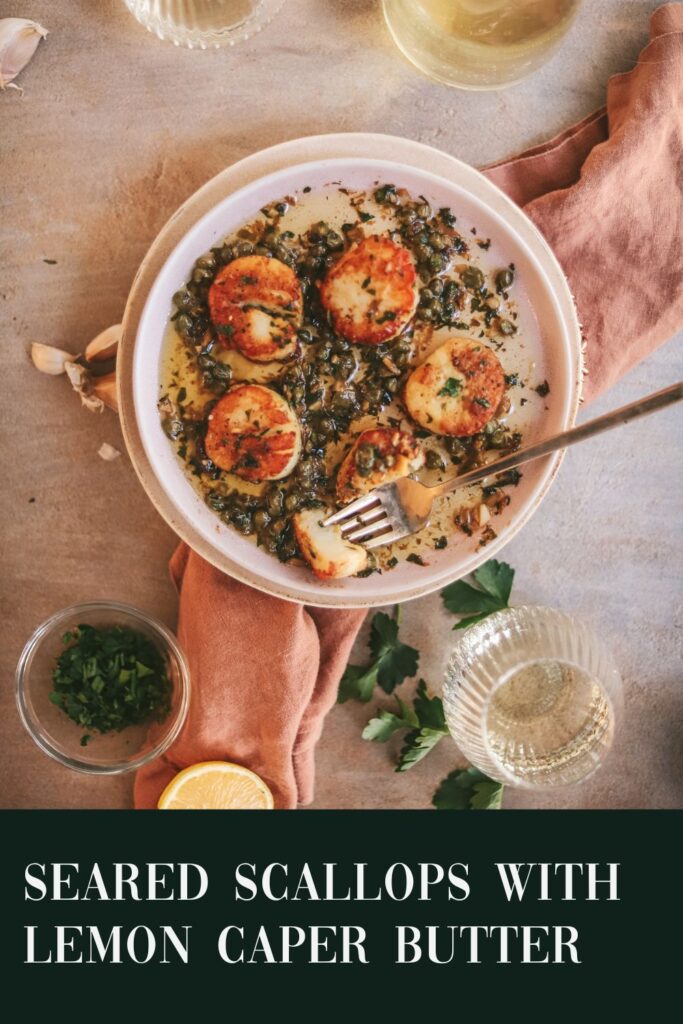

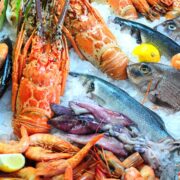
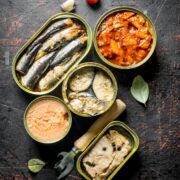
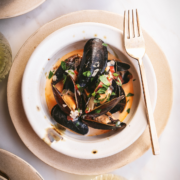

Amy says
Hi, I don’t see capers in this ingredient list. No biggie though. Just wanted to give you heads up. 🙂
Still made it last night, I guessed the caper amount, added some heavy cream towards the end for sauce to go over rice with the scallops. Turned out really yummy. Thank you.
Cara says
Thank you so much Amy! I will rectify that immediately. And those additions sound absolutely delicious!